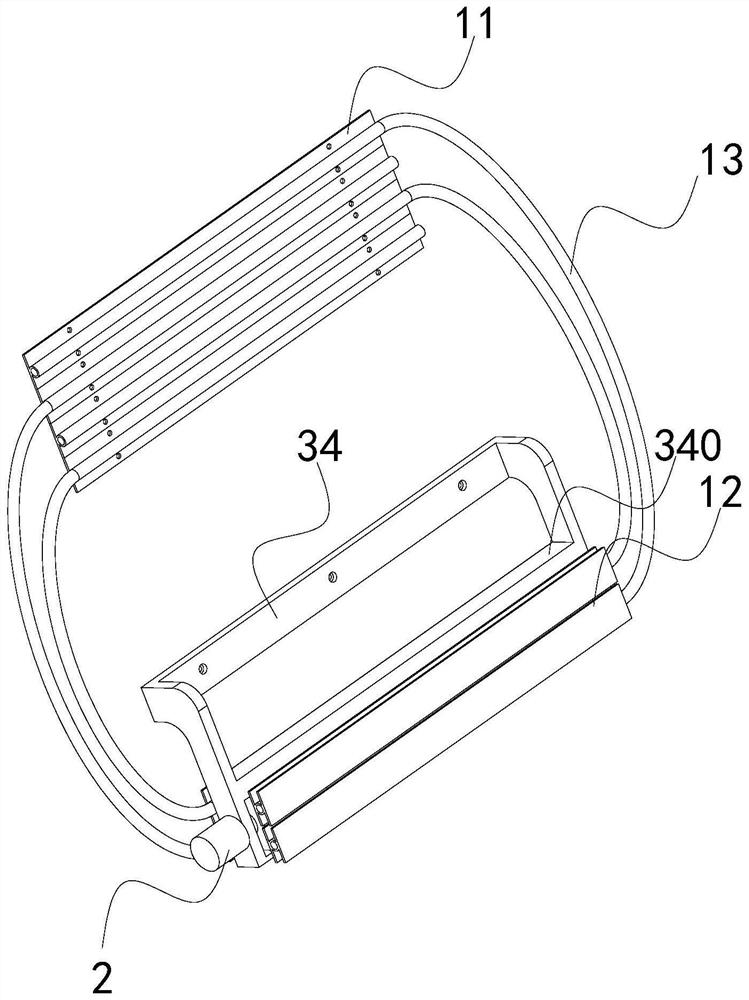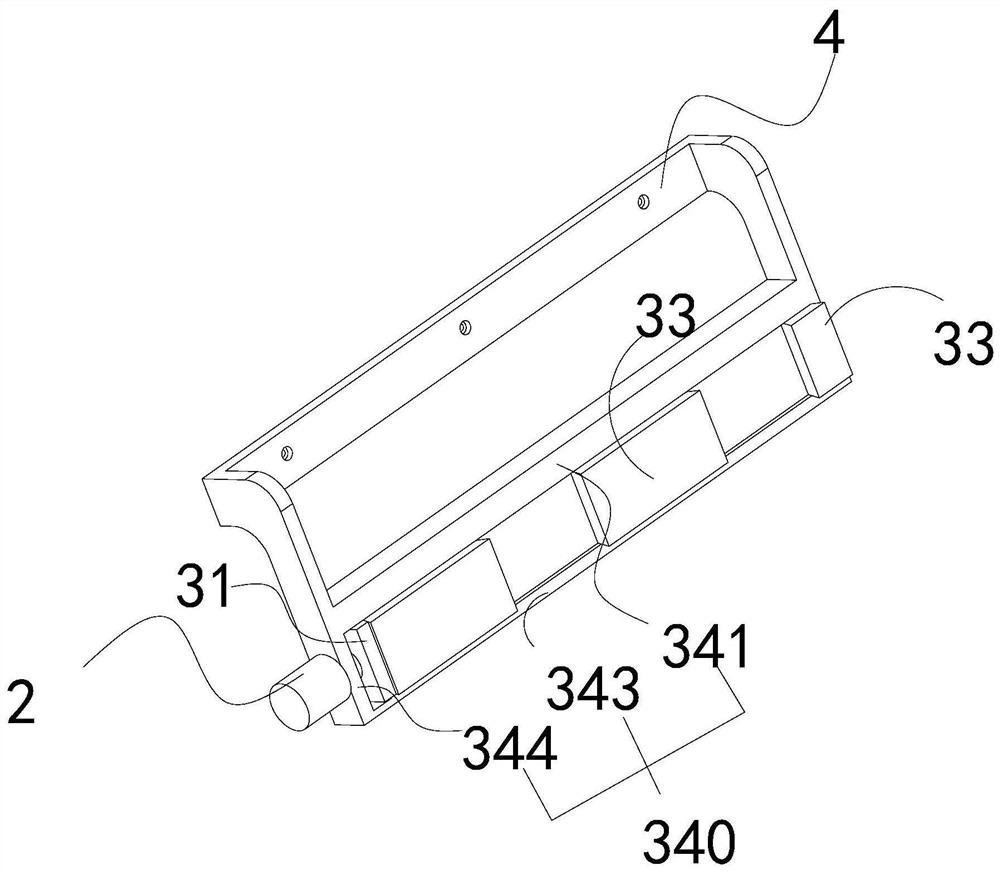A kind of auxiliary heat transfer mechanism, external load and space station
A technology for space stations and loads, applied in the fields of auxiliary heat transfer mechanisms, extravehicular loads and space stations, which can solve problems such as the inability to meet the small size and high power heat dissipation requirements of extravehicular loads
- Summary
- Abstract
- Description
- Claims
- Application Information
AI Technical Summary
Problems solved by technology
Method used
Image
Examples
Embodiment 1
[0037] Such as Figure 1-6 As shown, an auxiliary heat transfer mechanism for the external load of the space station is used to conduct the heat of the heat dissipation surface of the external load 8 to the cold plate of the bulkhead of the space station, including a heat conduction assembly 1 and an electric propulsion mechanism, and the heat transfer of the heat conduction assembly 1 The end is used to connect with the heat dissipation surface of the external load 8, and the cold end of the heat conduction component 1 is located on the free side of the electric propulsion mechanism, and moves toward the cold plate of the bulkhead of the space station under the push of the electric propulsion mechanism.
[0038] After the electric propulsion mechanism is powered on, the cold end of the heat conduction component 1 is pushed to move toward the cold plate of the bulkhead of the space station. , the heat of the heat dissipation surface of the external load 8 can be conducted to t...
Embodiment 2
[0062] Such as Figure 1-6 As shown, an external load 8 includes the aforementioned auxiliary heat transfer mechanism for the external load of a space station.
[0063] Specifically, such as Figure 5-6 As shown, an auxiliary heat transfer mechanism for the external load of the space station is respectively installed on two opposite cooling surfaces of the external load 8, the fixed support of the auxiliary heat transfer mechanism is L-shaped, and the fixed support of the auxiliary heat transfer mechanism is One end is fixed on the lower edge of the two heat dissipation surfaces by screws, and the other end is fixedly connected to the limit frame, and there is a certain gap between the limit frame and the plane where the heat dissipation surface is located. Above the support; the axis direction of the output shaft of the motor is parallel to the cooling surface.
[0064] A docking adapter for docking with a load adapter on the bulkhead of the space station is installed on th...
Embodiment 3
[0068] Such as Figure 1-6 As shown, a space station includes a bulkhead 5, a load adapter 6, a cold plate slot 7 and the above-mentioned external load 8, and the load adapter 6 is fixedly mounted on the bulkhead 5; the external load 8 is detachably connected to the load On the adapter 6; the cold plate groove 7 is opened on the bulkhead 5; the hot end of the heat conduction component 1 is fixedly connected with the heat dissipation surface of the external load 8, and the cold end of the electric push component 3 and the heat conduction component 1 is inserted into the cold plate groove 7, A cold plate is provided on the side wall of the cold plate groove 7 .
[0069] Specifically, such as Figure 5-6 As shown in , there are two cold plate slots on the bulkhead, which are located on both sides of the load adapter.
[0070] The docking adapter on the external load 8 in embodiment 2 is docked and fixedly installed with the load adapter to realize the installation and positioni...
PUM
 Login to View More
Login to View More Abstract
Description
Claims
Application Information
 Login to View More
Login to View More - R&D
- Intellectual Property
- Life Sciences
- Materials
- Tech Scout
- Unparalleled Data Quality
- Higher Quality Content
- 60% Fewer Hallucinations
Browse by: Latest US Patents, China's latest patents, Technical Efficacy Thesaurus, Application Domain, Technology Topic, Popular Technical Reports.
© 2025 PatSnap. All rights reserved.Legal|Privacy policy|Modern Slavery Act Transparency Statement|Sitemap|About US| Contact US: help@patsnap.com



